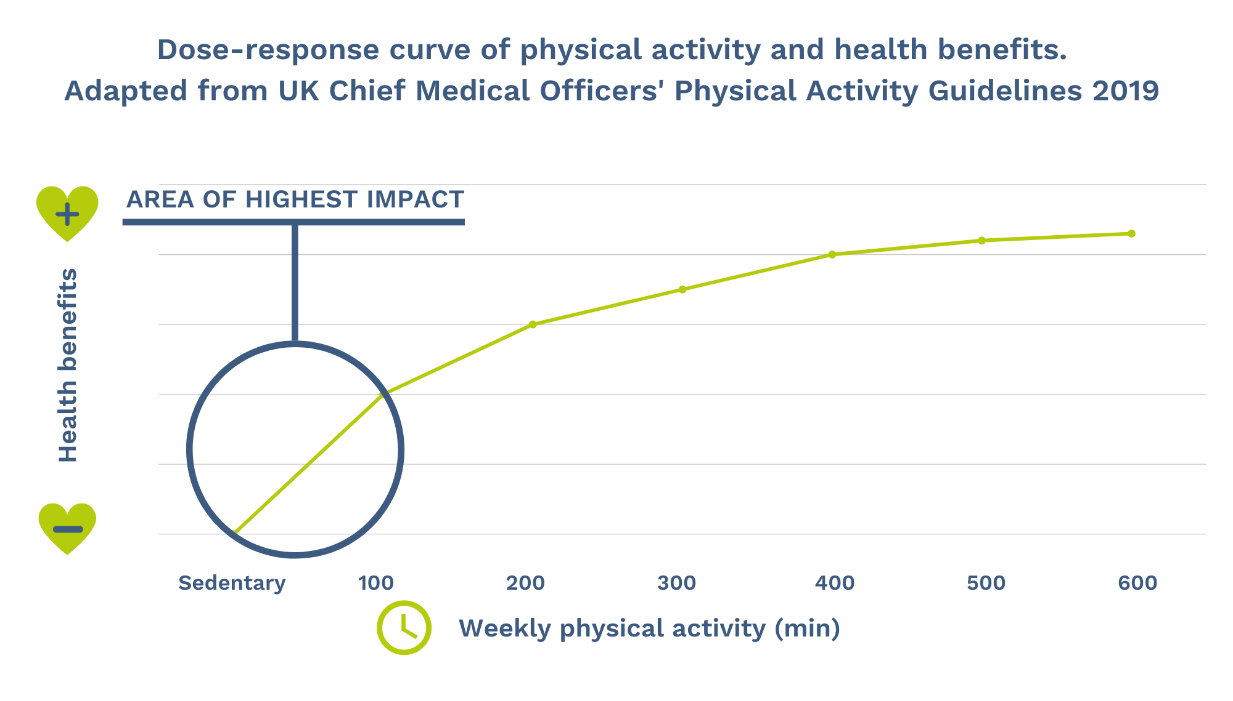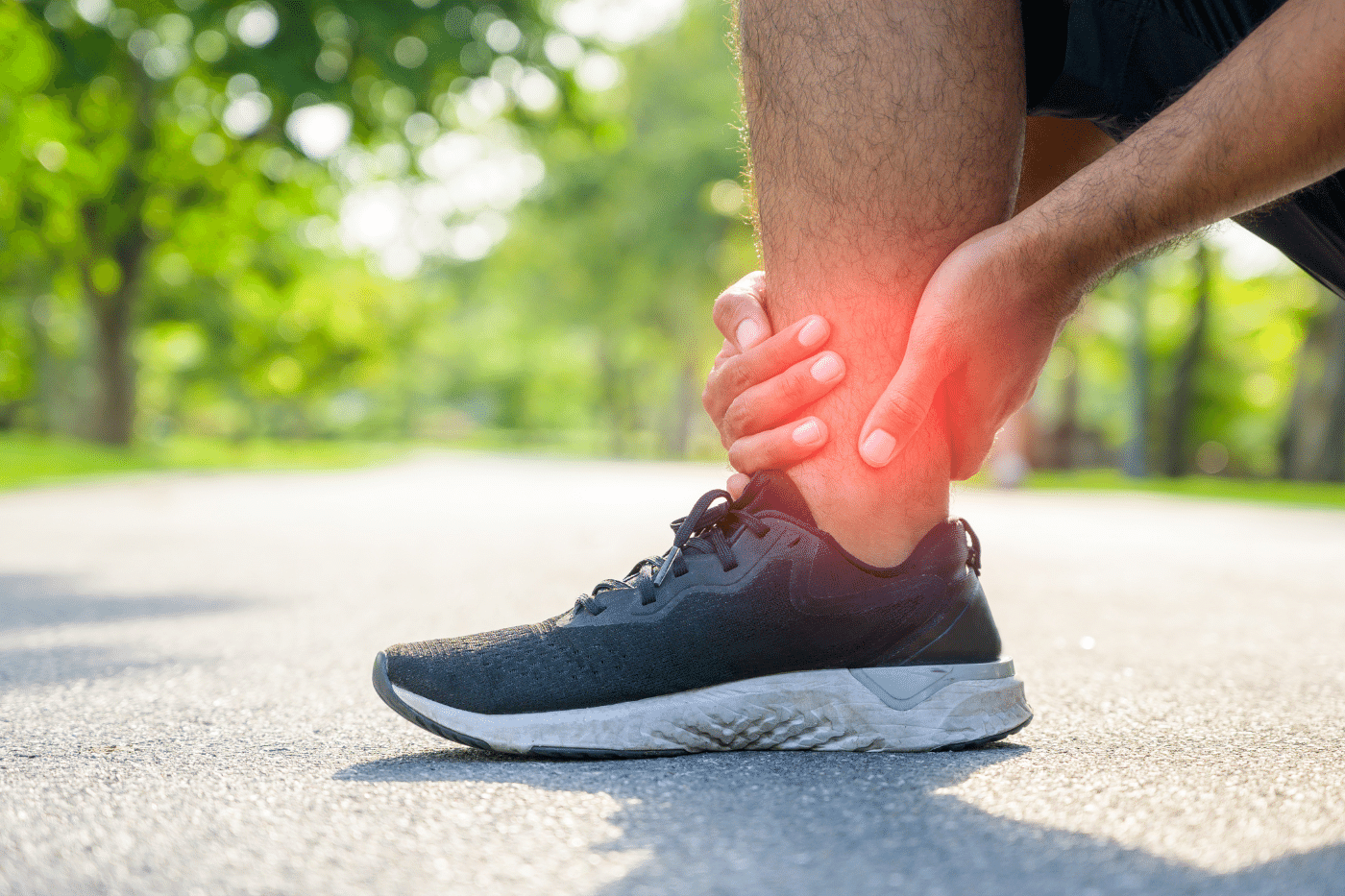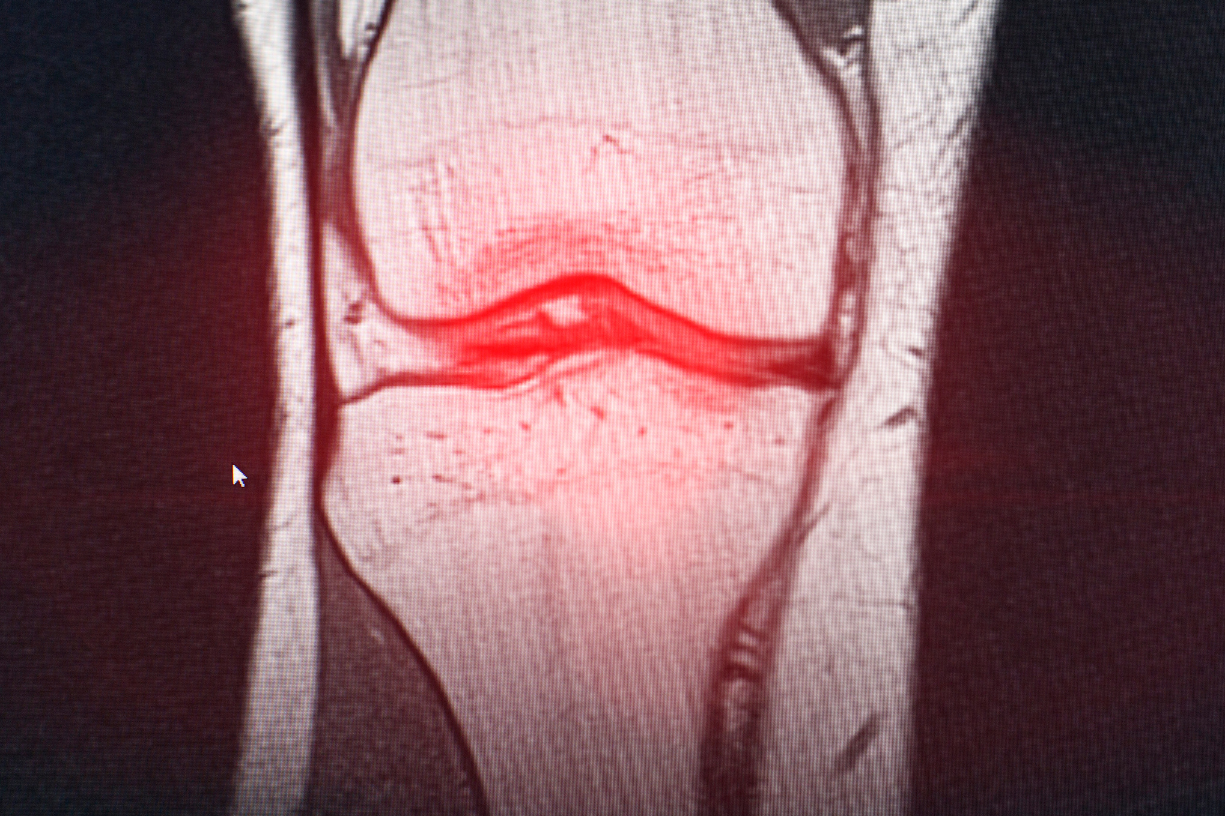What are the Best Ankle Pain Exercises?
Are you looking for ankle pain exercises?
We’ve put together this comprehensive guide just for you. We’ll address your most pressing questions about ankle pain exercises and dive into the different factors that could be contributing to your discomfort. And don’t worry, we’ll give you advice on when it’s best to seek medical attention.
You might be surprised to discover the various conditions and injuries that can lead to ankle pain. We’re here to debunk some common myths about this issue and provide you with tips on how to prevent future pain.
We understand that finding relief from your discomfort is a top priority. That’s why we’ll explore different treatments and strategies for managing ankle pain, including rest and movement. We’ll even share some advice on how to speed up the recovery process.
Plus, we’ve got some great exercises and stretches that can help alleviate ankle pain. With the right techniques, you’ll be able to address your discomfort and work towards a healthier, pain-free ankle.
If you’ve been experiencing ankle pain for more than two weeks or if your pain is severe, it’s important to consult with a Physiotherapist. They can rule out any underlying medical conditions and determine the best course of treatment for your specific needs. You can easily book a free assessment with one of our Physiotherapists online, or continue reading to learn more about how you can take control of your own ankle pain.
In this blog we’ll be looking at the following:
– What are the causes of ankle pain?
– When should I worry about my ankle pain?
– Why is your ankle in pain?
– Ankle pain myths you need to know
– How do you treat ankle pain?
GET A FREE ANKLE ONLINE PHYSIO ASSESSMENT.
What are the causes of ankle pain?
If you’re looking for ankle pain exercises, it’s important to understand that the most common type of pain in this area is muscular. You might notice tightness, stiffness, and discomfort in your ankle, which can be caused by factors like a restless night’s sleep or sudden force.
It’s worth mentioning that even if you haven’t experienced an injury or tissue damage, lifestyle elements such as stress, limited physical activity, poor sleep, mood, or beliefs can also contribute to this type of pain.
While other potential causes like arthritis or nerve pain are less likely, it’s still crucial to rule them out in order to get an accurate diagnosis and appropriate treatment.
If you’re curious to learn more about your pain and want to know how to manage it, we highly recommend booking a free assessment online with one of our experienced Physios
We specialise in providing ankle pain exercises and can develop a personalised treatment plan to get you back on track.
When should I worry about my ankle pain?
If you’re dealing with ankle pain, often there’s no need to worry. In most cases, it’s treatable and not a cause for major concern. However, it’s important to be aware of certain symptoms that may indicate the need for medical attention.
If you have a history of malignancy, are experiencing infective symptoms such as fever, sudden severe pain after a fall or injury, or are suddenly facing ankle stiffness along with difficulty using the toilet, it’s best to seek a medical assessment from NHS 24 by dialing 111.
Additionally, if you’re experiencing pain, tingling, numbness, or weakness in your arms or legs, have a history of inflammatory disease (especially if you’re on immunosuppressants), or notice abnormalities in sensation or power in your arms or legs, it’s crucial to get checked out as soon as possible.
For patients who are under 18 or over 55 years old and have recently developed symptoms, it’s recommended to see your GP.
However, in the absence of these symptoms, engaging in ankle pain exercises can effectively reduce discomfort and restore your usual activities.
Why is your ankle in pain?
When it comes to managing your ankle pain, it’s crucial for you to understand the nature of pain itself. Remember, pain is personal, normal, and always real.
Your brain perceives pain as a natural response to potential harm or danger, acting as an alarm system.

It’s fascinating to know that pain can occur even without apparent tissue damage, and its intensity may not always match the severity of the injury. Context plays a significant role in how we perceive pain.
Instead of seeing your body as a machine that needs fixing, think of it more like an orchestra, with each movement playing a different instrument. To restore effective function within the orchestra, the goal is to re-tune the instrument when you experience pain or discomfort.

It’s important to recognise the difference between pain and discomfort during the recovery process. Gradual stress is necessary to improve your body’s function, even if it causes some discomfort. While resting the painful area might seem like the right approach, it can actually delay your recovery. The key is to gradually stress the tissue to help it adapt and become stronger.
Hence, doing ankle pain exercises, when carried out with the suitable intensity, acts as a powerful method to aid rehabilitation and alleviate pain during the recovery period.
GET A FREE ANKLE ONLINE PHYSIO ASSESSMENT.
Ankle pain myths you need to know
It’s completely understandable if you’ve come across old ankle pain myths and have placed your faith in them. These myths were established before we had a better understanding of the issue. However, relying on these myths can often lead to fear and dependence on others to solve the problem.
The good news is that with a better understanding, you can learn to address the issue yourself. This not only saves you time and money but also improves your overall quality of life. So, don’t hesitate to educate yourself and take charge of your ankle health.
Myth #1: Running is bad for your ankle.
Contrary to popular belief, the notion that running is bad for your ankle is actually a myth. In fact, research has shown that runners are not at a higher risk of developing ankle arthritis compared to non-runners. On the contrary, those who participate in running activities, even at moderate levels, may actually have healthier ankles and feet.
According to multiple studies and experts in the field, running can actually fortify and strengthen the joints, including the ankle. Regular running promotes the health of the cartilage in the ankle, which helps stave off ankle arthritis. It is important to note that this applies to individuals who engage in running with proper form and technique.
Interestingly, it is those who do not run or lead sedentary lifestyles that are more susceptible to ankle issues and arthritis. Lack of physical activity can lead to weak muscles and poor joint support, increasing the risk of ankle problems.
While it is true that excessive running or high-volume training, such as ultra-marathon running, can potentially increase the risk of certain injuries, including ankle issues, it does not mean that running itself is inherently harmful to the ankles and feet. It is crucial to find the right balance and listen to your body’s signals to avoid overexertion and injury.
So, if you enjoy running or are considering taking it up, rest assured that you’re not damaging your ankle. In fact, by incorporating running into your routine while being mindful of your body’s limits, you can actually contribute to better ankle health and overall well-being. Remember to consult with a healthcare professional or a qualified trainer for personalised advice and best ankle pain exercises for you.
Myth #2: Your ankle hurts because it’s out of alignment and needs manipulating or mobilising to put it back.
If you’ve been contemplating manipulating or “cracking” your joints to find relief from ankle pain, it’s important to understand that any temporary relief you may experience fails to address the root cause of the problem. Despite what you may have heard, poor ankle posture and alignment are not strongly linked to ankle pain.
According to a systematic review and meta-analysis, which looked at 47 randomised trials and included over 4000 participants, found joint manipulation or mobilisation alone can only provide immediate or short-term pain relief that doesn’t last in the long run.
Instead of relying solely on manipulation, it’s crucial to tackle the underlying cause of your ankle pain by adopting healthy habits and seeking expert advice. Factors such as poor physical activity habits, stress, lack of sleep, and limiting beliefs may contribute to your pain.
So, while spinal manipulation may offer temporary satisfaction, it’s not a sustainable solution. If you want to prevent the recurrence of your ankle pain, focus on developing healthy habits and consulting with experts to effectively manage your pain and improve your overall quality of life.
Myth #3: Your ankle hurts because you’re getting old and it’s a sign of arthritis from wear and tear.
If you’re in your middle ages and dealing with ankle pain, it’s common to assume that it’s just a normal part of getting older and that medication is the only solution to manage the discomfort and decline in function. However, this assumption is both unhelpful for your recovery and simply not true.
Ankle pain can affect anyone, regardless of age. It’s not necessarily caused by wear and tear alone, and many young individuals can experience ankle pain while some older individuals may not. Even those with ankle arthritis can have minimal pain despite significant joint deformities.
A study from 2021 looked at 113 amateur marathon runners. They used an MRI scan to assess the tissue quality of the runners. They found bone marrow swelling, peritendinous effusion, and partial lateral collateral ligament injuries, which are degenerative injuries associated with ageing. However, all the runners in the study were asymptomatic, they had no pain! This suggests that most age-related changes in the body, such as ankle tissue degeneration, are similar to internal wrinkles or grey hairs – natural and painless processes.
So, unless you exhibit any of the red flags described earlier, getting a scan of your ankle won’t provide helpful information. The scan won’t reveal why your ankle is painful or offer new insights. Instead, the best approach for ankle pain is to seek advice, education, and focus on movement as medicine.
Myth #4: “I don’t want to mask the pain with tablets”
If you’re dealing with ankle pain, the idea of taking painkillers might make you feel hesitant. You may worry that they will just mask the pain or potentially worsen it if you move your ankle too much. On the other hand, some individuals may choose to avoid painkillers on principle.
However, under the guidance of a GP or pharmacist, taking short-term painkillers can actually support an earlier recovery and facilitate exercise. This is because acute ankle pain often stems from increased sensitivity in the area rather than actual damage. It’s important to remember that pain doesn’t always indicate harm.
By incorporating painkillers into your treatment plan, you can gradually increase mobility in your ankle and break the cycle of pain, limited movement, stiffness, and sensitivity. So, don’t hesitate to discuss pain management options with your doctor. They can provide guidance on how to use painkillers effectively, helping you recover faster and get back to your daily activities.
GET A FREE ANKLE ONLINE PHYSIO ASSESSMENT.
How do you treat ankle pain?
If you’re dealing with ankle pain and seeking a short-term solution, consider trying a Sports Massage. Not only can it provide relief from pain, but it can also uplift your mood, boost your immune system, and reduce stress levels. Additionally, your therapist can guide you through exercises outlined in this blog to help alleviate your fear of movement.
However, if you’re looking for a more long-term solution, the Treatment Pyramid outlined below is the way to go.

The first step involves finding a reputable Physiotherapist who can educate you about your condition, alleviate your fear of movement, and create a customised rehabilitation plan based on your specific needs.
The next step entails engaging in general movement therapy, which has proven to be an effective pain reliever for most muscle-related pains. By aiming for at least 150 minutes of moderate-intensity exercise per week, including 30 minutes of progressive resistance training on two separate days, you can make significant progress!
Even if you’re not currently getting enough physical activity, even a 5-minute walk each day can make a difference.

Increasing your physical activity can enhance your physical and mental resilience to movement and activity through bioplasticity – meaning your ankle tissue can improve and adapt with movement, ultimately reducing pain and the risk of injury or discomfort.
Think of your physical capacity as a cup, and daily physical movements and mental stressors as the liquid. The larger your cup, the better your ankle and brain can handle stress. This reduces the likelihood of experiencing pain and discomfort. However, simply resting won’t solve the problem. Instead, we need to intelligently stress your tissues to improve function and symptoms effectively.

This is where the Goldilocks principle of rehabilitation comes into play. Resting your ankle and relying on an ankle brace won’t be helpful. In fact, it can weaken your muscles and worsen your symptoms. On the other hand, excessive movement can aggravate your symptoms and delay your recovery. This is where ankle pain exercises with the optimal load can improve your pain and movement

Is it better to rest or move ankle pain?
Now that you’re aware of the benefits of stress, you can leverage it to your advantage when it comes to managing ankle pain. By applying just the right amount of stress to your ankle, you create small micro-traumas that send signals to your brain and central nervous system, prompting improvements in your range of motion and stress tolerance.
When combined with proper sleep and effective stress management techniques, your body can enter a state of super-compensation. This means that it becomes stronger and more resilient than before, as illustrated in the super-compensation graph below.

By consistently challenging your ankle with the appropriate level of stress and allowing for adequate recovery time, you can expand the capacity of your “cup” and enhance both your symptoms and ankle function. This concept, known as bioplasticity, is a powerful tool for recovery.

However, it’s important to exercise caution and avoid overdoing it. Excessive stress, whether it’s mental or physical, can actually exacerbate your ankle pain and increase muscle tension. Therefore, finding the right balance between stress and recovery is key to achieving optimal results.
How long does ankle pain take to heal?
It’s important to keep in mind that not everyone dealing with ankle pain will experience a complete resolution of their symptoms and disability. However, by following a solid rehab plan, you can maximise your chances of improving painful symptoms and returning to normal levels of function.
Remember, recovering from ankle pain is often a journey with its ups and downs.

The speed of your recovery depends on various factors, such as the quality of advice and education you receive, your adherence to recommended treatments, and your levels of fear and catastrophisation.
To avoid setting unrealistic expectations, it’s best to view your rehab as a series of milestones rather than strict timelines. With our Ankle Pain Exercise Physio programme, we offer a structured approach that focuses on reaching each milestone at your own pace, guiding you through each stage of recovery step-by-step.

Unfortunately, there’s no magic solution for ankle pain. While placebos like acupuncture or dry needling may provide immediate relief for some individuals, their effects tend to be short-lived, requiring repeated treatments. This can quickly become costly and prolong your long-term recovery.
In the next section, we will outline our most effective mobility and strength treatments that have been proven to work well for individuals with ankle pain in the long run.
What are the best ankle pain exercises?
We’ve handpicked the exercises below based on the latest scientific research and our experience working with patients dealing with ankle pain. These dynamic strengthening and mobility protocols are specifically designed to enhance your physical capacity.
It’s important to note that the most effective rehab exercises for you are often the ones that challenge you and may feel a bit uncomfortable. For optimal results, we recommend performing each exercise at least twice a day. Start with 5 repetitions and gradually increase to 15 reps as you feel capable. It’s normal and even beneficial to experience slight discomfort (up to a pain level of 5 out of 10), but if it exceeds a 6 out of 10, take it easy and reduce the intensity.

Once you can comfortably do 15 repetitions of level 1, progress to level 2 and so on. Remember to exhale as you move into discomfort. This will help you relax and gradually improve your range of motion while alleviating symptoms. With patience and consistency, you’ll make great strides towards recovery before you know it!
If you’re currently dealing with ankle pain, it’s crucial to take action and seek assistance. Our free online ankle Physiotherapy assessment is an excellent starting point.
By incorporating scientifically based exercises that target your physical capacity, you can gradually build strength and mobility, resulting in reduced pain and improved overall wellbeing.
And for personalised guidance and support in your journey to ankle pain relief, consider enlisting the expertise of a certified Personal Trainer specialiing in rehabilitation. They can customise a program to suit your specific needs, ensuring a safe and effective recovery.
So don’t wait any longer – check out our FREE ONLINE ANKLE PHYSIOTHERAPY ASSESSMENT today and take the first step towards a future free from pain.




